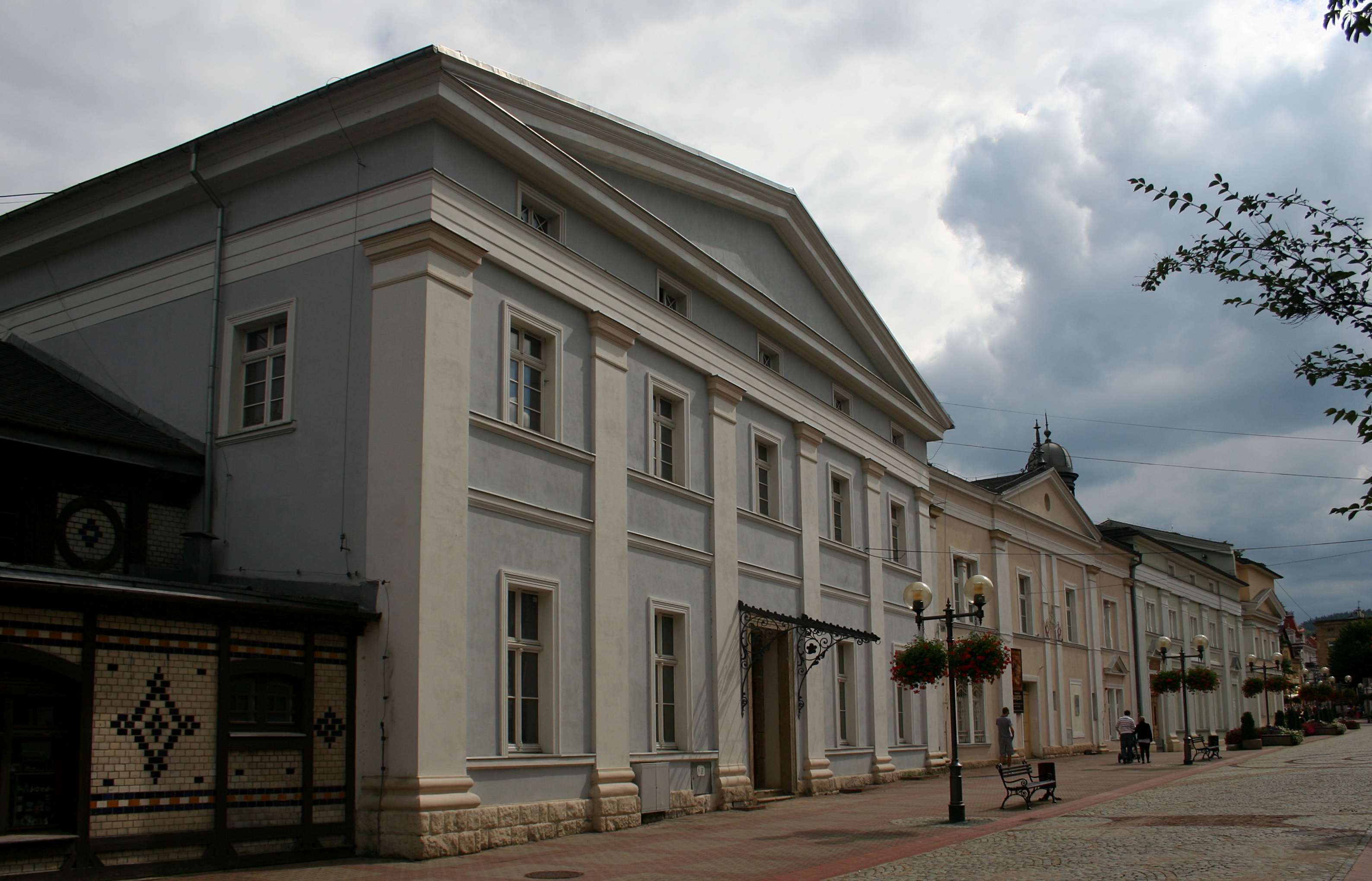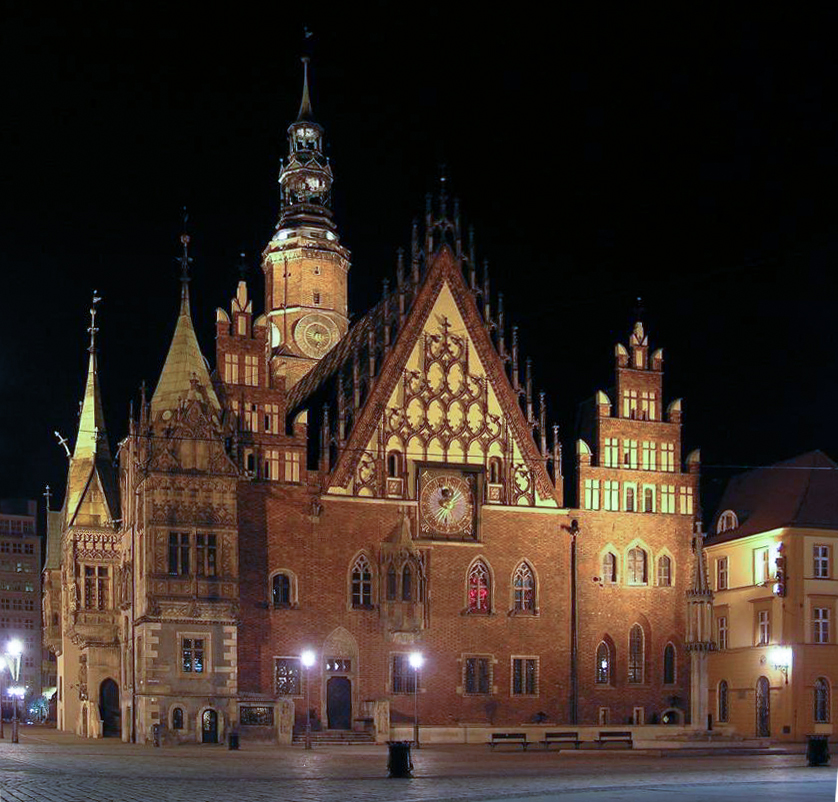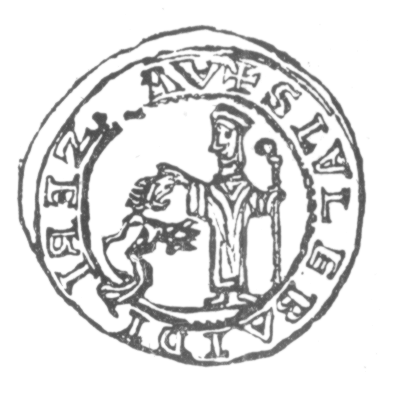|
Szczawno-Zdrój
Szczawno-Zdrój (german: Bad Salzbrunn, until 1935 ''Ober Salzbrunn'') is a spa town in Wałbrzych County, Lower Silesian Voivodeship, in south-western Poland. Geography The town in the historic Lower Silesia region is situated north of the Central Sudetes mountains, approximately north-west of Wałbrzych and south-west of the regional capital Wrocław. Szczawno-Zdrój borders the city of Wałbrzych rin the east and the town of Boguszów-Gorce in the south. As of 2019, the town has a population of 5,608. History The area was settled in the course of the clearing of the former Silesian Przesieka borderland. A place called ''Salzborn'' was first mentioned in a 1221 deed, from the 14th century two settlements, ''Nieder'' ("Lower") and ''Ober'' ("Upper") ''Salzbrunn'' are documented. The parish church and a hospital at ''Nieder Salzbrunn'' were probably established by the Piast duke Henry I the Bearded after 1200, benefitting from the healing spring at ''Ober Salzbrunn'' first ... [...More Info...] [...Related Items...] OR: [Wikipedia] [Google] [Baidu] |
Lower Silesian Voivodeship
Lower Silesian Voivodeship, or Lower Silesia Province, in southwestern Poland, is one of the 16 voivodeships (provinces) into which Poland is divided. The voivodeship was created on 1 January 1999 out of the former Wrocław, Legnica, Wałbrzych and Jelenia Góra Voivodeships, following the Polish local government reforms adopted in 1998. It covers an area of , and has a total population of 2,899,986. It is one of the richest provinces in Poland as it has valuable natural resources such as copper, silver, gold, brown coal and rock materials (inter alia granite, basalt, gabbro, diabase, amphibolite, porphyry, gneiss, serpentinite, sandstone, greywacke, limestone, dolomite, bentonite, kaolinite, clay, aggregate), which are exploited by the biggest enterprises. Its well developed and varied industries attract both domestic and foreign investors. Its capital and largest city is Wrocław, situated on the Oder River. It is one of Poland's largest and most dynamic ci ... [...More Info...] [...Related Items...] OR: [Wikipedia] [Google] [Baidu] |
Wałbrzych County
__NOTOC__ Wałbrzych County ( pl, powiat wałbrzyski; german: Waldenburg) is a unit of territorial administration and local government (powiat) in Lower Silesian Voivodeship, south-western Poland. It was created on January 1, 1999, as a result of the Polish local government reforms passed in 1998. The county covers an area of . Its administrative seat is the city of Wałbrzych, which is located outside of the county, and it also contains the towns of Boguszów-Gorce, Głuszyca, Szczawno-Zdrój, Jedlina-Zdrój and Mieroszów. When the county came into being in 1999, the city of Wałbrzych was not part of its territory, although it served as the county seat. As of 2003 the city county ('' powiat grodzki'') of Wałbrzych was incorporated into Wałbrzych County. Wałbrzych became again a separate city county starting from 1 January 2013 and is no longer part of the Wałbrzych County (powiat wałbrzychski).http://isap.sejm.gov.pl/DetailsServlet?id=WDU20120000853 As of 2019 the total ... [...More Info...] [...Related Items...] OR: [Wikipedia] [Google] [Baidu] |
Wałbrzych
Wałbrzych (; german: Waldenburg; szl, Wałbrzich; sli, label= Lower Silesian, Walmbrig or ''Walmbrich''; cs, Valbřich or ) is a city located in the Lower Silesian Voivodeship, in southwestern Poland. From 1975–1998 it was the capital of Wałbrzych Voivodeship; it is now the seat of Wałbrzych County. Wałbrzych lies approximately southwest of the voivodeship capital Wrocław and about from the Czech border. Wałbrzych has the status of municipality. Its administrative borders encompass an area of with 110,000 inhabitants, making it the second-largest city in the voivodeship and the 33rd largest in the country. Wałbrzych was once a major coal mining and industrial center alongside most of Silesia. The city was left undamaged after World War II and possesses rich historical architecture; among the most recognizable landmarks is the Książ Castle, the largest castle of Lower Silesia and the third-largest in Poland. In 2015 Wałbrzych became widely known due to the s ... [...More Info...] [...Related Items...] OR: [Wikipedia] [Google] [Baidu] |
Agnes Of Austria (1322–1392)
Agnes of Austria ( pl, Agnieszka; 1322 – 2 February 1392) was a German princess member of the House of Habsburg and by marriage Duchess of Świdnica. She was the second daughter of Leopold I, Duke of Austria, by his wife Katharina, daughter of Amadeus V, Count of Savoy. Life After the early death of her father in 1326, Agnes and her older sister Katharina (later by marriage Lady of Coucy) were placed under the guardianship of their paternal uncles, Frederick the Fair and Albert II. On 1 June 1338 Agnes married with Bolko II the Small, Duke of Świdnica, who wanted with this union to enhance his international position against the House of Luxembourg, direct competitors of the Habsburgs. The marriage apparently was childless, although some sources stated that they had two children: a daughter, Elisabeth (d. 1407) and a son, Bolko, who, according to old Silesian legend, died with only nine-years-old, accidentally killed by the court jester Jakob Thau, when he threw a stone to hi ... [...More Info...] [...Related Items...] OR: [Wikipedia] [Google] [Baidu] |
Duchy Of Silesia
The Duchy of Silesia ( pl, Księstwo śląskie, german: Herzogtum Schlesien, cs, Slezské knížectví) with its capital at Wrocław was a medieval duchy located in the historic Silesian region of Poland. Soon after it was formed under the Piast dynasty in 1138, it fragmented into various Silesian duchies. In 1327, the remaining Duchy of Wrocław as well as most other duchies ruled by the Silesian Piasts passed to the Kingdom of Bohemia as Duchies of Silesia. The acquisition was completed when King Casimir III the Great of Poland renounced his rights to Silesia in the 1335 Treaty of Trentschin. Geography During the time of its establishment, the Silesian lands covered the basin of the upper and middle Oder river. In the south the Sudetes mountain range up to the Moravian Gate formed the border with the lands of Bohemia - including Kłodzko Land - and Moravia. After a more than century-long struggle, the boundary had just been determined by an 1137 agreement with the Bo ... [...More Info...] [...Related Items...] OR: [Wikipedia] [Google] [Baidu] |
Duchy Of Jawor
Duchy of Jawor ( pl, Księstwo Jaworskie, german: Herzogtum Jauer) was one of the Duchies of Silesia established in 1274 as a subdivision of the Duchy of Legnica. It was ruled by the Silesian Piasts, with its capital at Jawor in Lower Silesia. Geography The original Duchy stretched from Jawor on the Nysa Szalona River westwards along the northern slopes of the Western Sudetes to the Jizera Mountains and the Kwisa River, which formed the Silesian border with the former Milceni lands of Upper Lusatia. In the north it bordered the remaining Duchy of Legnica and in the east the Duchy of Silesia-Wrocław. It included the towns of Bolków, Kamienna Góra, Lubawka, Lwówek, Świerzawa and (from 1277) Strzegom. History The Silesian Duchy of Legnica since 1248 had been under the rule of Duke Bolesław II Rogatka. When Bolesław's eldest son Henry V the Fat succeeded his father as Duke of Legnica in 1278, he gave the Jawor subdivision to his younger brothers Bolko I the Str ... [...More Info...] [...Related Items...] OR: [Wikipedia] [Google] [Baidu] |
Lands Of The Bohemian Crown
The Lands of the Bohemian Crown were a number of incorporated states in Central Europe during the medieval and early modern periods connected by feudal relations under the Bohemian kings. The crown lands primarily consisted of the Kingdom of Bohemia, an electorate of the Holy Roman Empire according to the Golden Bull of 1356, the Margraviate of Moravia, the Duchies of Silesia, and the two Lusatias, known as the Margraviate of Upper Lusatia and the Margraviate of Lower Lusatia, as well as other territories throughout its history. This agglomeration of states nominally under the rule of the Bohemian kings was historically referred to simply as Bohemia. They are now sometimes referred to in scholarship as the Czech lands, a direct translation of the Czech abbreviated name. The joint rule of ''Corona regni Bohemiae'' was legally established by decree of King Charles IV issued on 7 April 1348, on the foundation of the original Czech lands ruled by the Přemyslid dynasty until 1 ... [...More Info...] [...Related Items...] OR: [Wikipedia] [Google] [Baidu] |
Bolko II The Small
Bolko II the Small (c. 1312 – 28 July 1368), was the last independent Duke of the Piast dynasty in Silesia. He was Duke of Świdnica from 1326, Duke of Jawor and Lwówek from 1346, Duke of Lusatia from 1364, Duke over half of Brzeg and Oława from 1358, Duke of Siewierz from 1359, and Duke over half of Głogów and Ścinawa from 1361. He was the oldest son of Bernard, Duke of Świdnica, by his wife Kunigunde, daughter of Władysław I the Elbow-high, Duke of Kuyavia and, from 1320, King of Poland. Like his grandfather, King Elbow-high, Bolko II was of small stature; his nickname, "the Small" (''Mały''), reflects this and was used in contemporary sources. Early years After the death of his father in 1326, Bolko II, with his younger brother Henry II as co-ruler, succeeded him in all his domains. Because both princes were still in their teenage years, they were at first aided by their two paternal uncles, Dukes Bolko II of Ziębice and Henry I of Jawor, as well as their mot ... [...More Info...] [...Related Items...] OR: [Wikipedia] [Google] [Baidu] |
List Of Sovereign States
The following is a list providing an overview of sovereign states around the world with information on their status and recognition of their sovereignty. The 206 listed states can be divided into three categories based on membership within the United Nations System: 193 member states of the United Nations, UN member states, 2 United Nations General Assembly observers#Present non-member observers, UN General Assembly non-member observer states, and 11 other states. The ''sovereignty dispute'' column indicates states having undisputed sovereignty (188 states, of which there are 187 UN member states and 1 UN General Assembly non-member observer state), states having disputed sovereignty (16 states, of which there are 6 UN member states, 1 UN General Assembly non-member observer state, and 9 de facto states), and states having a political status of the Cook Islands and Niue, special political status (2 states, both in associated state, free association with New Zealand). Compi ... [...More Info...] [...Related Items...] OR: [Wikipedia] [Google] [Baidu] |
Kingdom Of Bohemia
The Kingdom of Bohemia ( cs, České království),; la, link=no, Regnum Bohemiae sometimes in English literature referred to as the Czech Kingdom, was a medieval and early modern monarchy in Central Europe, the predecessor of the modern Czech Republic. It was an Imperial State in the Holy Roman Empire, and the Bohemian king was a prince-elector of the empire. The kings of Bohemia, besides the region of Bohemia proper itself, also ruled other lands belonging to the Bohemian Crown, which at various times included Moravia, Silesia, Lusatia, and parts of Saxony, Brandenburg, and Bavaria. The kingdom was established by the Přemyslid dynasty in the 12th century from the Duchy of Bohemia, later ruled by the House of Luxembourg, the Jagiellonian dynasty, and from 1526 the House of Habsburg and its successor, the House of Habsburg-Lorraine. Numerous kings of Bohemia were also elected Holy Roman Emperors, and the capital, Prague, was the imperial seat in the late 14th cent ... [...More Info...] [...Related Items...] OR: [Wikipedia] [Google] [Baidu] |
Henry I The Bearded
Henry the Bearded ( pl, Henryk (Jędrzych) Brodaty, german: Heinrich der Bärtige; c. 1165/70 – 19 March 1238) was a Polish duke from the Piast dynasty. He was Duke of Silesia at Wrocław from 1201, Duke of Kraków and High Duke of all Poland – internally divided – from 1232 until his death. Life Early career and the loss of Opole Henry was the fourth son of Duke Bolesław I the Tall of Silesia, by his second wife Christina, probably a German. He was born in Głogów (''Glogau''), Lower Silesia. Henry's three older brothers Boleslaw, Conrad and John (1174-1190) died. His older half-brother Jarosław of Opole became a priest, possibly because of the scheming of Henry's mother Christina. Henry became Bolesław's sole heir in 1190. Through his marriage with Hedwig of Andechs (1182–1189), Henry was connected to the rulers of Germany, Hungary, Bohemia, and France. Henry's father, Bolesław I, died 8 December 1201. Early in 1202 Henry's uncle, Duke Mieszko IV Tanglef ... [...More Info...] [...Related Items...] OR: [Wikipedia] [Google] [Baidu] |





_Tafel_03.png)